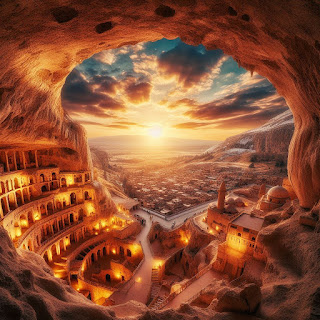DERINKUYU
In 1963, a Turkish man was renovating his house when he knocked
down a wall and stumbled on a tunnel like passage that led to other passage.
The appropriate authorities were called and after a long and thorough
investigation, it was realized that this man had found an ancient architectural
masterpiece. This masterpiece turned out to be the long lost yet preserved city
of Derinkuyu. The subterrenean city is up to 18 stories with an astonishing
depth of 280 feet. It could comfortably house 20,00 people with their
livestock. Ventilation shafts were also dug up for oxygen to the upper levels.
Although archeologists have been unable to tell who built it, it
is believed to have been built by the Phrygians in the 8th -- 7th centuries.
When the Phrygian language died out in Roman times replaced with the Greek
language, the inhabitants now Christians expanded their carvens to deep
multiple level structures adding the chapels and Greek inscriptions. The
city(Derinkuyu) was fully formed in the Byzantine era when it was heavily used
as protection from Arab Muslims during the Arab-Byzantine wars. But the
question remains, how was it built?
Well scientists say that the rock into which Derinkuyu was
carved, was made of layers and layers of compact volcanic ash also known as
Tuff, this soft rock is porous and Fragile, which explains how ancient people
were able to carve the underground city extensively using simple tools like a
pick and shovel.
In conclusion, Derinkuyu stands as a testament to human
ingenuity and resilience across the ages.




Wow..This is really informative 😁
ReplyDelete